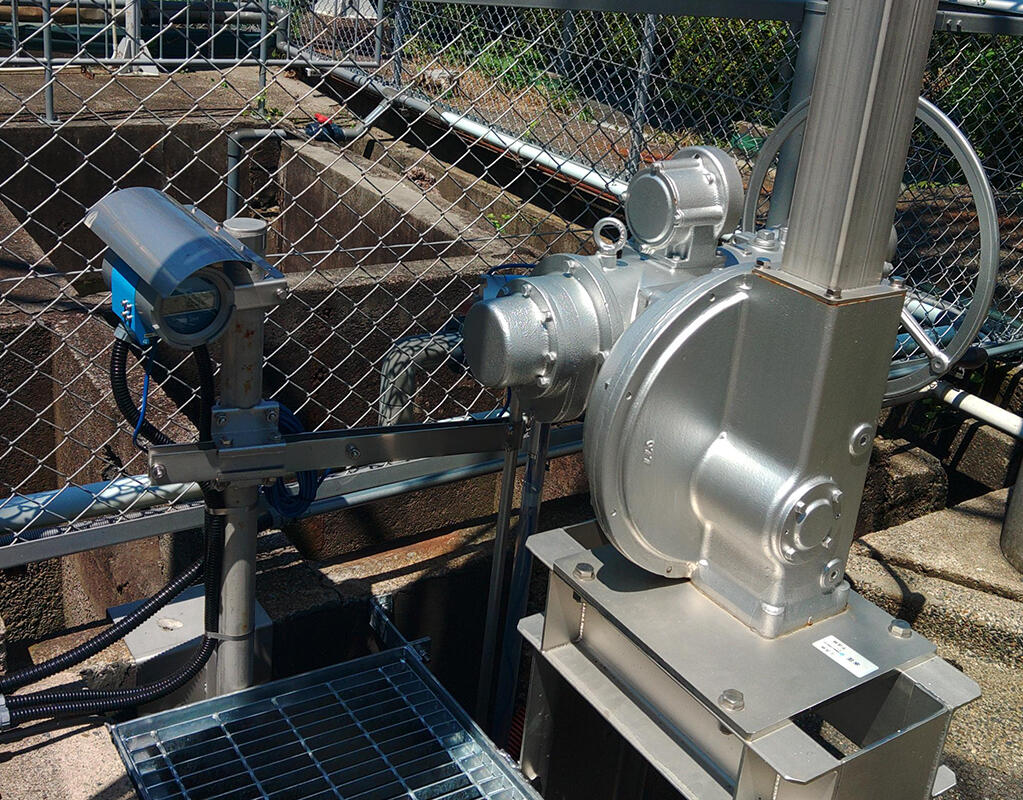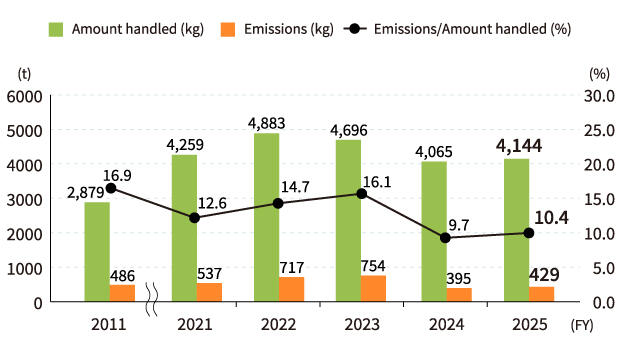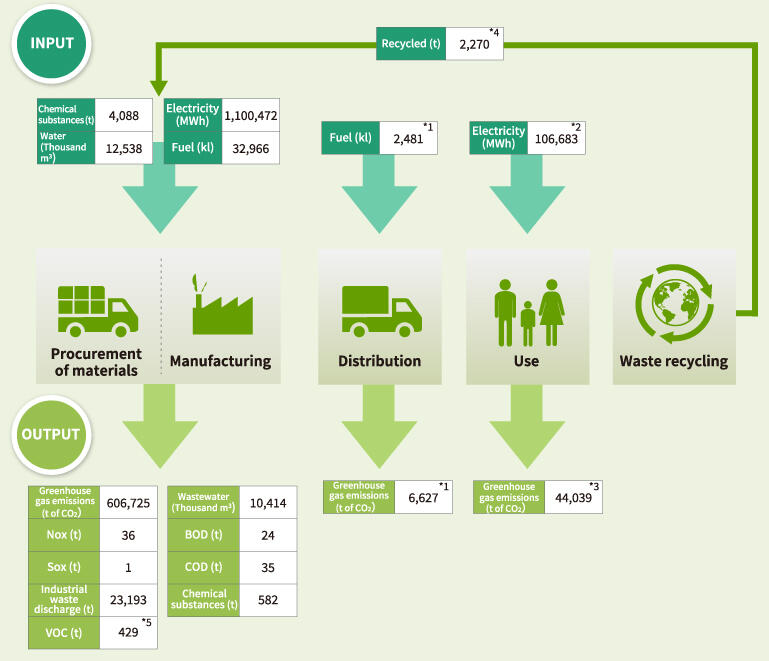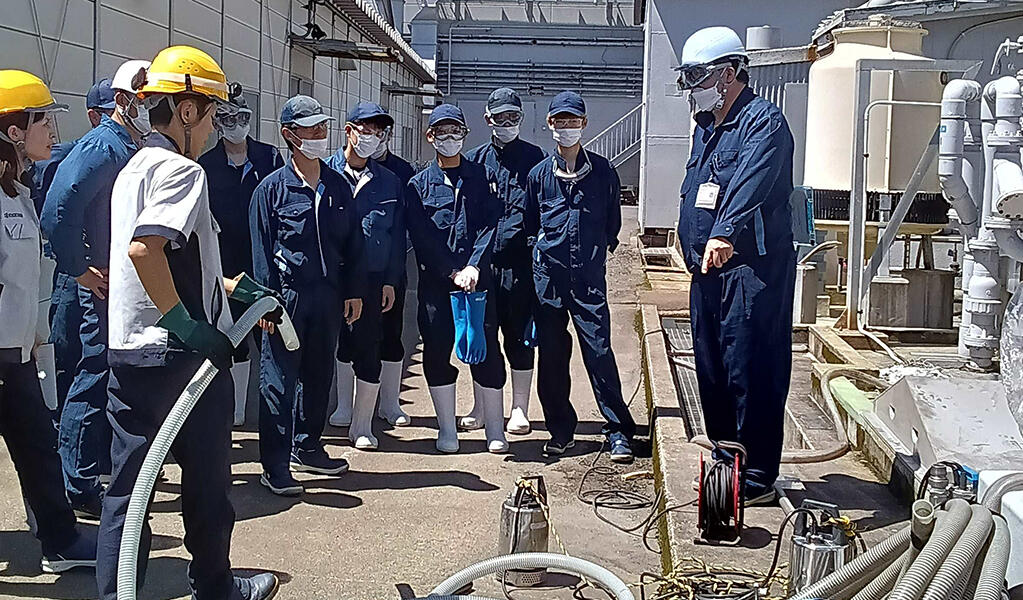Environmental Risk Management
The Kyocera Group (Japan) specifies management procedures for the discharge of gas and wastewater, and the handling of noise and vibration to prevent pollution in the surrounding environment. The Group also established Environmental Management Standards for each site that are stricter than statutory and public regulations on the emissions of gas and wastewater. Based on these Standards, each operation site establishes autonomous environmental management standards and conducts periodical environmental measurement by a third-party measurement certification inspection organization to ensure compliance with the standards.

Environmental Compliance
In FY2025, the Kyocera Group had no claims regarding environmental laws, regulations, or administrative guidance. However, there were three noise complaints, all of which were promptly addressed.
Number of violations of laws and regulations*
| Violations of laws and regulations, administrative guidance | Complaints | ||||
|---|---|---|---|---|---|
| Water quality | Air quality | Wastes | Other | ||
| FY2025 | 0 | 0 | 0 | 0 | 3 |
Principal Kyocera Group sites in Japan, and some of our overseas sites, have acquired integrated ISO14001 certification
Environmental Pollution Prevention Measures
Initiatives to Prevent Water Pollution
The Kyocera Group monitors pH, suspended solids, and other substances prohibited by regulations when discharging rainwater stored at plants. If abnormalities are detected in the rainwater, we close outlets to prevent discharge. We process rainwater with detected abnormalities at wastewater treatment facilities, etc. prior to discharge to eliminate environmental impact.

Initiatives to Prevent Soil and Groundwater Pollution
We have a system to immediately detect leakage in transfer and drain pipes for chemical substances. Around chemical and drain tanks, we install dikes to prevent outflow and penetration into soil. Furthermore, we periodically measure groundwater to check for harmful substances used at our plants penetrating underground.
Reports on Soil and Groundwater Contamination
The Kyocera Group (Japan) conducts soil surveys and provides survey reports to competent local governments according to the Soil Contamination Countermeasures Act.
Consequently, a total of 6 locations were designated as areas which require action under the Act: Asahi City, Chiba, in 2013; Ebetsu City, Hokkaido, in 2014; Hachioji City, Tokyo, in 2014; Mikasa City, Hokkaido, in 2015; and Kawasaki City, Kanagawa in 2019; Hiki-gun, Saitama in 2022. No confirmation of any spread to or impact in the surrounding areas of those sites has been reported.
We are taking appropriate measures in close cooperation with each associated municipality.
Control of Chemical Substances
Some chemical substances can cause environmental pollution and/or affect human health and the ecosystem. The Kyocera Group sets a voluntary control standard and takes initiative in carrying out environmental impact mitigation activities.
The Kyocera Group (Japan) carries out thorough control of emissions and the transferred amount of Class I Designated Chemical Substances as prescribed by PRTR Law. We also control the handling volumes and emissions of volatile organic compounds (VOC), which are a source of suspended particulate matter and photochemical oxidants.
Volatile Organic Compound (VOC)
The amount of VOC handled by the Kyocera Group (Japan) in FY2025 was 4,144 tons, emitted VOC was 429 tons, and atmospheric emission rate was 10.4%. The Kyocera Group continues striving to reduce its VOC emissions.

Data in FY2024 have been updated to improve the accuracy of data aggregation for some locations.
Targets included for VOC aggregation are 20 substances specified by the Japan Electronics and Information Technology Industries Association (JEITA).
Overall Environmental Impact
The Kyocera Group (Japan) tracks and manages business activities and environmental impact.
Data from the procurement, manufacturing, distribution, use, disposal, and recycling stages are used at each stage to formulate policies and analyze and evaluate the results to effectively reduce environmental impact.

- In accordance with the Act on the Rational Use of Energy, we calculate the distribution-related impact based on report data such as the use of energy in transportation by the specified consigner (Kyocera).
- We calculate the annual power consumption of the main products we sold in FY2025 (printers, multifunctional products, smartphones, etc.).
- We calculate the annual greenhouse gas emissions of the main products we sold in FY2025 (printers, multifunctional products, smartphones, etc.).
- We calculate the weight of toner containers and Multifunction printer reused and total amount of toner containers recycled in FY2025. (Kyocera Document Solutions Inc.)
- We calculate VOC figures based on data from Kyocera Corporation's domestic sites.
INPUT items
| Chemical substances | Consumption of substances covered by PRTR Law (Class I Designated Chemical Substances) |
|---|---|
| Water | Consumption of tap water, industrial water, and groundwater |
| Electricity | Consumption of electricity purchased from electrical power companies |
| Fuel | Consumption as energy of gas, light oil, heavy oil etc. (crude oil conversion) |
OUTPUT items
| Greenhouse gases | Emissions of CO2 and PFC etc. (6 types) as a consequence of using electricity, gas and fuel |
|---|---|
| NOx | Impact of nitrogen oxides associated with the combustion of gas, fuel, etc. |
| SOx | Impact of sulfur oxides associated with the combustion of fuel |
| Industrial waste | Industrial waste discharge generated in the course of our business activities |
| Wastewater | Volume of wastewater discharged into rivers etc. (Excluding wastewater discharged into sewage systems) |
| BOD | Impact of biochemical oxygen demand |
| COD | Impact of chemical oxygen demand |
| Chemical substances | Emissions and transferred amount of substances covered by PRTR Law (Class I Designated Chemical Substances) |
| VOC | Emissions of 20 VOC into the atmosphere |
Emergency Procedures
To respond to incidents and emergencies that may have an impact on the regional environment, the Kyocera Group has developed disaster manuals and has prepared emergency equipment, and conducts at least one training session each year for response and reporting. Such emergency drills allow us to review and revise our response procedures, leading to continual improvement.
